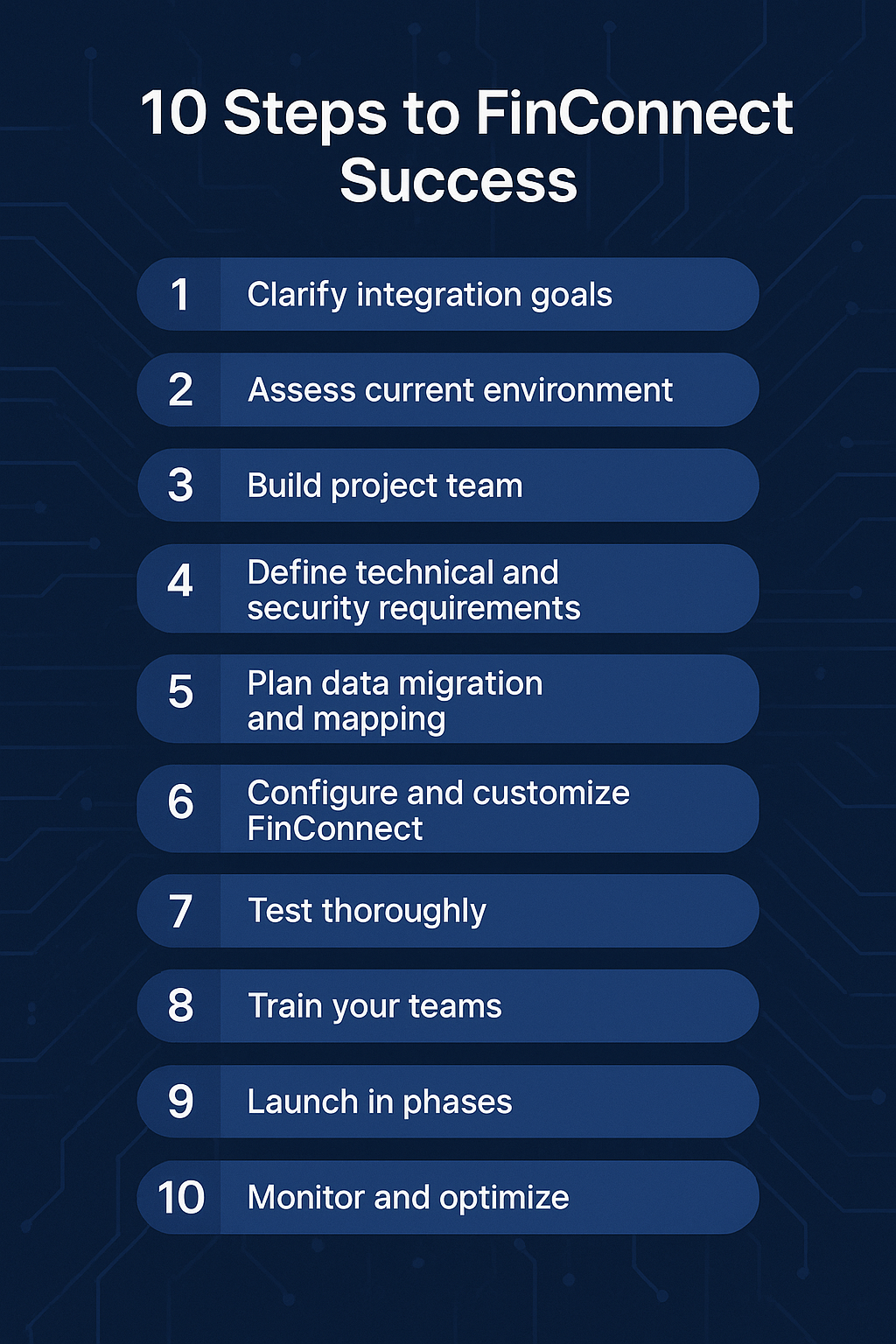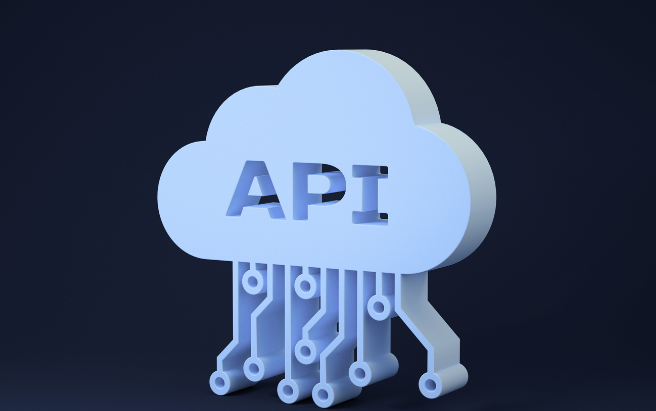Your Step-by-Step Roadmap to Modern Integration
Implementing FinConnect isn’t just a tech upgrade, it’s a business advantage. This guide helps you ensure your rollout is fast, secure, and future-ready.
Why FinConnect Matters for Modern Banking
Digital transformation has become essential for banks and fintechs. Whether you’re modernizing legacy systems, launching new APIs, or integrating with third-party partners, FinConnect provides the flexibility, control, and scalability to move faster, with fewer risks.
This implementation roadmap walks you through the full journey, from setting goals to post-launch optimization, so you can deploy FinConnect with confidence.
Step 1: Clarify Your Integration Goals
Before you dive into setup, define success.
- What are your key priorities, speed, cost, compliance, scalability?
- Which systems or platforms must be integrated first?
- What digital products or services are in the pipeline?
- Who are your internal champions (IT, risk, operations)?
Align stakeholders early and document priorities to avoid delays later.
Step 2: Assess Your Current Environment
A successful migration starts with visibility.
- Inventory existing systems, APIs, and data sources
- Identify manual or error-prone processes
- Map out critical workflows that cannot afford downtime
Document this assessment. It will guide prioritization and risk management.
Step 3: Build a Cross-Functional Project Team
Integration is a team sport.
- Appoint a sponsor or project lead with cross-department influence
- Include experts from IT, compliance, risk, operations, and CX
- Identify internal “power users” to champion adoption
Cross-functional teams speed decision-making and adoption.
Step 4: Define Technical and Security Requirements
Ensure the solution meets your environment and obligations.
- Do you require cloud, on-premises, or hybrid deployment?
- What regulations apply (GDPR, PSD2, ISO 27001)?
- Are there data residency or sovereignty concerns?
- What encryption and access controls are mandatory?
Checklist: Request FinConnect’s latest security certifications and documentation.
Step 5: Plan Data Migration and Integration Mapping
Start small, test smart, and scale securely.
- List data flows and processes to be migrated
- Separate prebuilt connectors from custom integrations
- Use a sandbox or test environment for end-to-end validation
- Run a non-critical pilot migration before full deployment
Step 6: Configure and Customize FinConnect
Tailor the platform to your structure and brand.
- Define user roles, access levels, and permissions
- Apply brand styling (colors, logo, contact info)
- Set up real-time monitoring, workflows, and notifications
A platform that reflects your operations and drives adoption.
Step 7: Test Thoroughly, Then Test Again
Testing prevents failure on launch day.
- Validate all flows: data, errors, compliance, authentication
- Simulate outages and failover scenarios
- Review findings with the full project team
Rushing testing costs more in the long run.
Step 8: Train Your Teams and Document Key Processes
Onboarding is essential for long-term success.
- Deliver role-specific training for IT, ops, and support
- Create quick-start guides and a searchable knowledge base
- Document processes for escalation and support
Step 9: Launch in Phases
Minimize risk by rolling out strategically.
- Start with low-risk integrations
- Monitor results before expanding
- Collect user feedback to iterate in real time
Keep close contact with your FinConnect account manager during each phase.
Step 10: Monitor, Optimize, and Evolve
Integration is not a one-time project, it’s an ongoing capability.
- Track KPIs: uptime, latency, error rates, satisfaction
- Schedule regular reviews to refine workflows and connectors
- Watch for new FinConnect features to enhance capabilities

FinConnect Implementation Checklist
Pre-Implementation
- Define goals and key stakeholders
- Inventory systems and integrations
- Establish technical/security requirements
- Build the implementation team
Planning Phase
- Map integration flows and priorities
- Identify pilot use cases
- Develop migration and test plan
Implementation
- Configure user roles, permissions, monitoring
- Customize branding and workflows
- Test in both sandbox and live environments
- Train teams and document operations
Go-Live & Post-Launch
- Launch in phases based on risk
- Monitor usage and performance
- Iterate based on real-time feedback

What You Can Expect After a Successful Implementation
- Faster time to market: Launch integrations in weeks, not months
- Reduced downtime: Real-time alerts and automated failovers
- Better collaboration: Business, IT, and compliance on the same page
- Scalability: Add partners or services without starting from scratch
- Built-in compliance: Meet evolving regulatory requirements
Ready to Get Started?
Contact us today for a tailored implementation consultation or
Download the FinConnect Implementation Toolkit, including this guide, project plan templates, and a full checklist.













